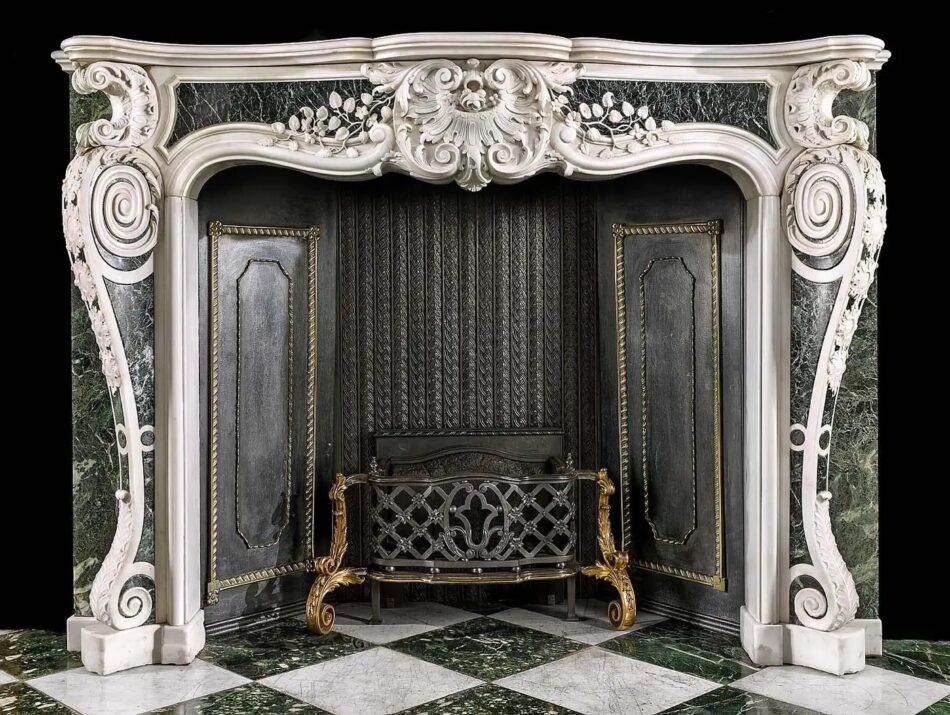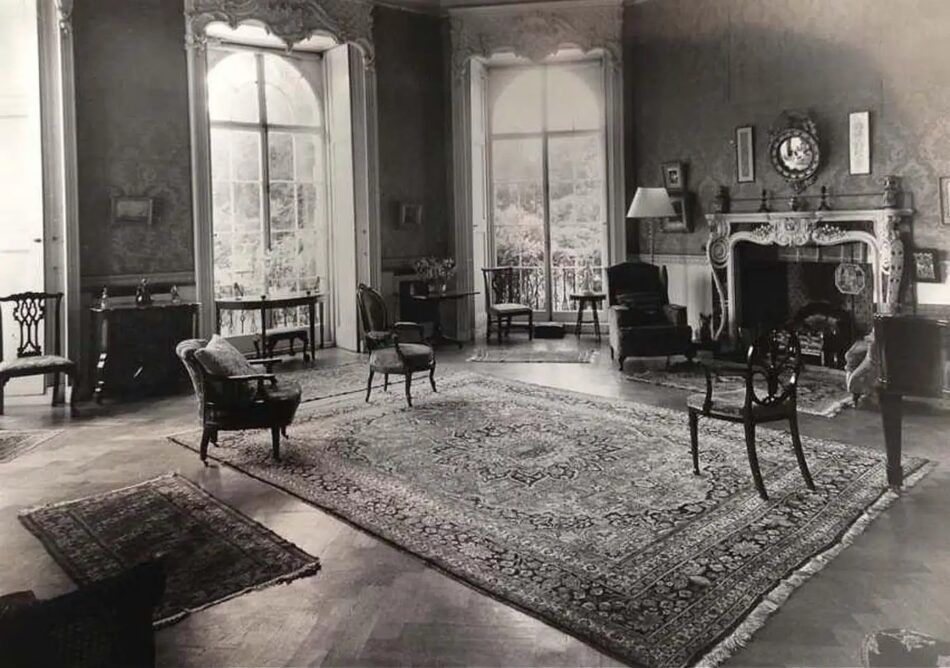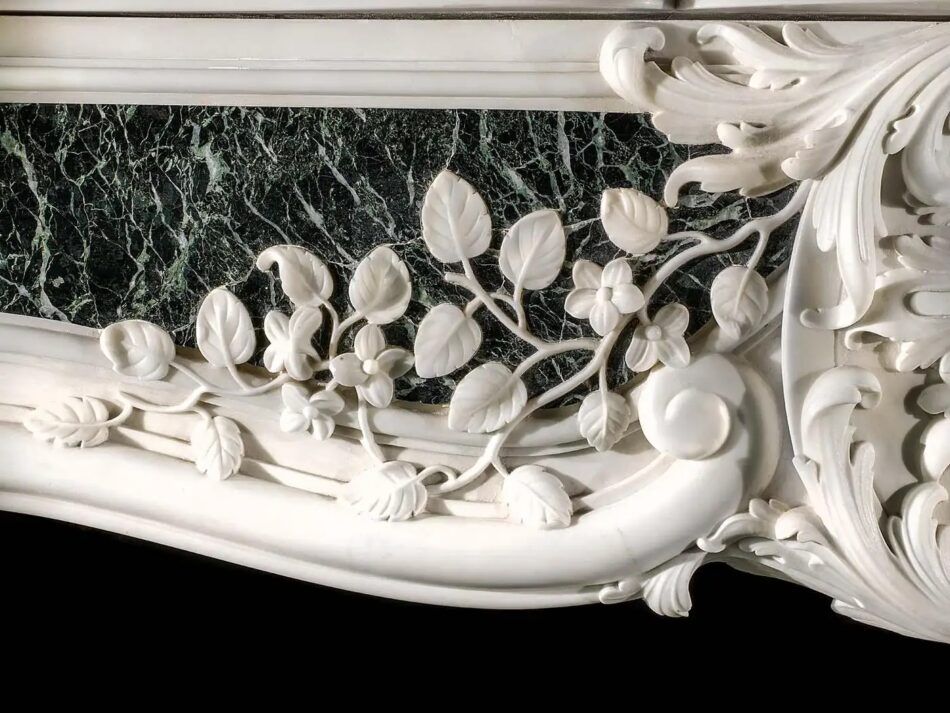
The sheer heft and presence of a great chimneypiece — better known to some as a mantel — make it a sight to behold. But the George II chimneypiece in white statuary and verd antique marble that is being offered by furniture gallery Westland London takes the form to a new level with its intricate artistry and surprising history.
“It’s the perfect example of the English rococo style,” says Laura Dadswell, the gallery’s director. That style, which was directly inspired by French decorative arts of the time, began to gel around 1740, and this chimneypiece was made somewhere between 1750 and 1760.
Its carvings include several kinds of delightful scrolls, as well as jasmine sprigs and acanthus (oak leaf) details, making it a treasure trove of the era’s symbols. They are made all the more striking by the contrast between the white and green marble.
The piece’s original location is not known, but in the late Victorian era it was installed in a great estate, Minto House, in Roxburghshire, Scotland. The historic home was torn down in 1992 — an infamous loss that still rankles preservationists.

Dadswell says the chimneypiece “may have jibed well with Victorian taste for excess and grandeur.” And she notes that as one of the only remaining vestiges of Minto, it has additional significance. “It’s an important relic that survived the demolition.”
Westland London has worked to conserve the piece, and it’s now in top condition to be enjoyed by a lucky buyer. So where, exactly, should it go? “I’d love to see it go back to Scotland,” says Dadswell. “But I would say, the most important thing is that it be in a room designed around it. It has to be the star.”






